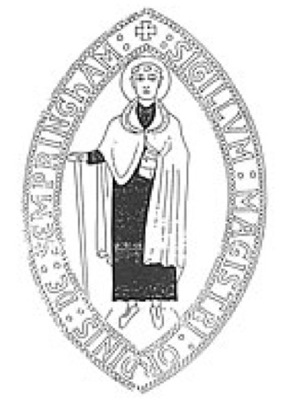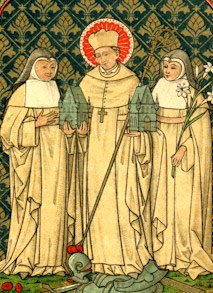|
Newstead-on-Ancholme Priory
Newstead-on-Ancholme Priory was a priory in Lincolnshire, England. The Gilbertine priory of Holy Trinity, Newstead-on-Ancholme, was founded for Gilbertine canons by King Henry II in 1171. The endowment was small, and the number of canons and lay brothers was limited by Saint Gilbert to thirteen. The priory was surrendered in 1538, by the prior, Robert Hobson, and five canons. Newstead Priory farmhouse, a grade I listed building In the United Kingdom, a listed building or listed structure is one that has been placed on one of the four statutory lists maintained by Historic England in England, Historic Environment Scotland in Scotland, in Wales, and the Northern Irel ... was built on the site, and one room in the farmhouse is a vaulted room of the Gibertine priory, possibly part of the refectory. References Monasteries in Lincolnshire Gilbertine monasteries 1171 establishments in England Christian monasteries established in the 12th century 1538 disestablishmen ... [...More Info...] [...Related Items...] OR: [Wikipedia] [Google] [Baidu] |
Lincolnshire
Lincolnshire (abbreviated Lincs.) is a county in the East Midlands of England, with a long coastline on the North Sea to the east. It borders Norfolk to the south-east, Cambridgeshire to the south, Rutland to the south-west, Leicestershire and Nottinghamshire to the west, South Yorkshire to the north-west, and the East Riding of Yorkshire to the north. It also borders Northamptonshire in the south for just , England's shortest county boundary. The county town is Lincoln, where the county council is also based. The ceremonial county of Lincolnshire consists of the non-metropolitan county of Lincolnshire and the area covered by the unitary authorities of North Lincolnshire and North East Lincolnshire. Part of the ceremonial county is in the Yorkshire and the Humber region of England, and most is in the East Midlands region. The county is the second-largest of the English ceremonial counties and one that is predominantly agricultural in land use. The county is fourth-larg ... [...More Info...] [...Related Items...] OR: [Wikipedia] [Google] [Baidu] |
Gilbertine Order
The Gilbertine Order of Canons Regular was founded around 1130 by Gilbert of Sempringham, Saint Gilbert in Sempringham, Lincolnshire, where Gilbert was the parish priest. It was the only completely England, English religious order and came to an end in the 16th century at the time of the Dissolution of the Monasteries. Modest Gilbertine revivals have taken place in the late 20th and early 21st centuries on three continents. Founding Gilbert initially established a community for enclosed contemplative nuns. He accepted seven women whom he had taught in the village school and in 1131 founded an order of nuns based on the Rule of St Benedict, Cistercian Rule. Gilbert set up buildings and a cloister for them against the north wall of the church, which stood on his land at Sempringham, and gave them a rule of life, enjoining upon them chastity, humility, obedience, and charity. Their daily necessaries were passed to them through a window by some girls chosen by Gilbert from among his ... [...More Info...] [...Related Items...] OR: [Wikipedia] [Google] [Baidu] |
Holy Trinity
The Christian doctrine of the Trinity (, from 'threefold') is the central dogma concerning the nature of God in most Christian churches, which defines one God existing in three coequal, coeternal, consubstantial divine persons: God the Father, God the Son (Jesus Christ) and God the Holy Spirit, three distinct persons sharing one ''homoousion'' (essence) "each is God, complete and whole." As the Fourth Lateran Council declared, it is the Father who begets, the Son who is begotten, and the Holy Spirit who proceeds. In this context, the three persons define God is, while the one essence defines God is. This expresses at once their distinction and their indissoluble unity. Thus, the entire process of creation and grace is viewed as a single shared action of the three divine persons, in which each person manifests the attributes unique to them in the Trinity, thereby proving that everything comes "from the Father," "through the Son," and "in the Holy Spirit." This doctrine ... [...More Info...] [...Related Items...] OR: [Wikipedia] [Google] [Baidu] |
King Henry II Of England
Henry II (5 March 1133 – 6 July 1189), also known as Henry Curtmantle (french: link=no, Court-manteau), Henry FitzEmpress, or Henry Plantagenet, was King of England from 1154 until his death in 1189, and as such, was the first Angevin king of England. King Louis VII of France made him Duke of Normandy in 1150. Henry became Count of Anjou and Maine upon the death of his father, Count Geoffrey V, in 1151. His marriage in 1152 to Eleanor of Aquitaine, former spouse of Louis VII, made him Duke of Aquitaine. He became Count of Nantes by treaty in 1158. Before he was 40, he controlled England; large parts of Wales; the eastern half of Ireland; and the western half of France, an area that was later called the Angevin Empire. At various times, Henry also partially controlled Scotland and the Duchy of Brittany. Henry became politically involved by the age of 14 in the efforts of his mother Matilda, daughter of Henry I of England, to claim the English throne, then occupied by Steph ... [...More Info...] [...Related Items...] OR: [Wikipedia] [Google] [Baidu] |
Gilbert Of Sempringham
Gilbert of Sempringham (c. 1085 – 4 February 1189) the founder of the Gilbertine Order, was the only Medieval Englishman to found a conventual order, mainly because the Abbot of Cîteaux declined his request to assist him in organising a group of women who wanted to live as nuns, living with lay brothers and sisters, in 1148. He founded a double monastery of canons regular and nuns in spite of such a foundation being contrary to canonical practice. Life Gilbert was born at Sempringham, near Bourne in Lincolnshire, the son of Jocelin, an Anglo-Norman lord of the manor, and an unnamed Anglo-Saxon mother. He had a brother, Roger, and a sister, Agnes. Unusually for that period, his father actively prevented his son from becoming a knight, instead sending him to France, probably the University of Paris but possibly under Anselm of Laon, to study theology. Some physical deformity may have made him unfit for military service, making an ecclesiastical career the best option. When h ... [...More Info...] [...Related Items...] OR: [Wikipedia] [Google] [Baidu] |
Listed Building
In the United Kingdom, a listed building or listed structure is one that has been placed on one of the four statutory lists maintained by Historic England in England, Historic Environment Scotland in Scotland, in Wales, and the Northern Ireland Environment Agency in Northern Ireland. The term has also been used in the Republic of Ireland, where buildings are protected under the Planning and Development Act 2000. The statutory term in Ireland is " protected structure". A listed building may not be demolished, extended, or altered without special permission from the local planning authority, which typically consults the relevant central government agency, particularly for significant alterations to the more notable listed buildings. In England and Wales, a national amenity society must be notified of any work to a listed building which involves any element of demolition. Exemption from secular listed building control is provided for some buildings in current use for worship, ... [...More Info...] [...Related Items...] OR: [Wikipedia] [Google] [Baidu] |
Monasteries In Lincolnshire
A monastery is a building or complex of buildings comprising the domestic quarters and workplaces of monastics, monks or nuns, whether living in communities or alone (hermits). A monastery generally includes a place reserved for prayer which may be a chapel, church, or temple, and may also serve as an oratory, or in the case of communities anything from a single building housing only one senior and two or three junior monks or nuns, to vast complexes and estates housing tens or hundreds. A monastery complex typically comprises a number of buildings which include a church, dormitory, cloister, refectory, library, balneary and infirmary, and outlying granges. Depending on the location, the monastic order and the occupation of its inhabitants, the complex may also include a wide range of buildings that facilitate self-sufficiency and service to the community. These may include a hospice, a school, and a range of agricultural and manufacturing buildings such as a barn, a forge, ... [...More Info...] [...Related Items...] OR: [Wikipedia] [Google] [Baidu] |
Gilbertine Monasteries
The Gilbertine Order of Canons Regular was founded around 1130 by Saint Gilbert in Sempringham, Lincolnshire, where Gilbert was the parish priest. It was the only completely English religious order and came to an end in the 16th century at the time of the Dissolution of the Monasteries. Modest Gilbertine revivals have taken place in the late 20th and early 21st centuries on three continents. Founding Gilbert initially established a community for enclosed contemplative nuns. He accepted seven women whom he had taught in the village school and in 1131 founded an order of nuns based on the Cistercian Rule. Gilbert set up buildings and a cloister for them against the north wall of the church, which stood on his land at Sempringham, and gave them a rule of life, enjoining upon them chastity, humility, obedience, and charity. Their daily necessaries were passed to them through a window by some girls chosen by Gilbert from among his people. As the serving maids requested that they ... [...More Info...] [...Related Items...] OR: [Wikipedia] [Google] [Baidu] |
1171 Establishments In England
Year 1171 ( MCLXXI) was a common year starting on Friday (link will display the full calendar) of the Julian calendar. Events By place Byzantine Empire * March 12 – Emperor Manuel I (Komnenos) orders the arrest of all Venetians in his empire, and seizes their ships and goods. In September, Doge Vitale II Michiel leads a Venetian fleet (120 ships) against the Byzantines, conquering the cities of Trogir and Dubrovnik. But the plague takes a heavy toll among the fleet's crewmen; half the ships have to be burned to keep them from falling into enemy hands. A plague also breaks out in Venice, when the remaining ships return. Europe * Autumn – King Alfonso II (the Chaste) of Aragon conquers the cities of Caspe and Teruel. He strengthens his southern frontier after Almohad forces under Caliph Yusuf I ravage Catalonia. * The successors of Robert Bordet leave Catalonia for Mallorca, marking the end of the attempts to create a Norman principality in Ib ... [...More Info...] [...Related Items...] OR: [Wikipedia] [Google] [Baidu] |
Christian Monasteries Established In The 12th Century
Christians () are people who follow or adhere to Christianity, a monotheistic Abrahamic religion based on the life and teachings of Jesus Christ. The words ''Christ'' and ''Christian'' derive from the Koine Greek title ''Christós'' (Χριστός), a translation of the Biblical Hebrew term ''mashiach'' (מָשִׁיחַ) (usually rendered as ''messiah'' in English). While there are diverse interpretations of Christianity which sometimes conflict, they are united in believing that Jesus has a unique significance. The term ''Christian'' used as an adjective is descriptive of anything associated with Christianity or Christian churches, or in a proverbial sense "all that is noble, and good, and Christ-like." It does not have a meaning of 'of Christ' or 'related or pertaining to Christ'. According to a 2011 Pew Research Center survey, there were 2.2 billion Christians around the world in 2010, up from about 600 million in 1910. Today, about 37% of all Christians live in the Am ... [...More Info...] [...Related Items...] OR: [Wikipedia] [Google] [Baidu] |







